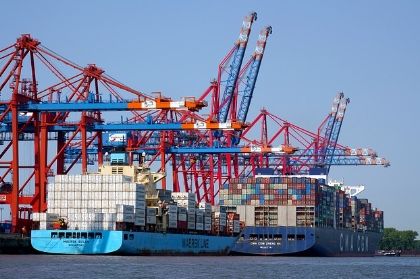How Does a Customs Declaration Form work?
A Customs Declaration Form is a critical document used in international trade that officially declares the details of goods being imported or exported across international borders. This form is essential for customs clearance and ensures that goods comply with the legal and regulatory requirements of the importing country. Here's an in-depth look at the operational mechanisms, benefits, and strategic implications of Customs Declaration Forms in global trade.

Operational Mechanisms of Customs Declaration Forms
1. Content and Requirements: A Customs Declaration Form typically includes detailed information about the nature of the goods, their value, quantity, and country of origin, along with the identities of the exporter and importer. This form may also require details about the intended use of the goods, their tariff classification, and any applicable taxes or duties.
2. Processing and Inspection: Once submitted, the form is reviewed by customs officials at the point of entry. The information provided helps officials assess whether the goods can legally enter the country, what duties or taxes should be applied, and whether any inspections are necessary. In some cases, additional documentation or physical inspection of the goods might be required to verify the declarations made.
3. Electronic Submission: Many countries now use electronic systems for the submission and processing of customs declaration forms. These systems facilitate quicker processing, reduce paperwork, and allow for pre-arrival processing, which speeds up the clearance process at the border.
Benefits of Customs Declaration Forms
1. Regulatory Compliance: Proper completion of customs declaration forms is crucial for complying with international trade laws and regulations. It ensures that all duties and taxes are accurately assessed and paid, which helps prevent legal issues and fines.
2. Efficient Border Processing: Accurate and complete forms allow for faster processing of goods through customs, reducing wait times and potential delays. This efficiency is crucial for perishable items and time-sensitive shipments.
3. Data Collection and Security: Customs declarations provide governments with important data about the types and volumes of goods entering and leaving the country. This data is essential for economic planning, trade policy decisions, and security measures against illegal trade.
Strategic Implications
1. Trade Facilitation: Efficient handling of customs declaration forms can significantly enhance trade facilitation by minimizing trade barriers and simplifying international transactions. This can be particularly beneficial in competitive industries where delivery speed is a critical factor.
2. Cost Management: Understanding and accurately completing customs declarations can help businesses manage costs associated with duties, taxes, and potential penalties for non-compliance. This knowledge is vital for pricing strategies and overall cost management in international trade.
3. Risk Management: Properly documented shipments reduce the risk of customs holds and inspections, which can disrupt supply chains and affect business operations. Companies that consistently provide complete and accurate customs documentation can avoid such disruptions and ensure smoother trade operations.
Conclusion The Customs Declaration Form is a cornerstone of international trade, ensuring that goods are processed efficiently and in compliance with applicable laws and regulations. For businesses engaged in international trade, understanding how to properly complete and manage these forms is essential for maintaining compliance, optimizing costs, and managing risks in global operations. This form not only facilitates smoother customs processing but also strengthens security and compliance frameworks necessary for international commerce.
Related articles

 WeChat of CBiBank
WeChat of CBiBank